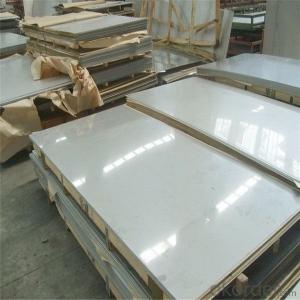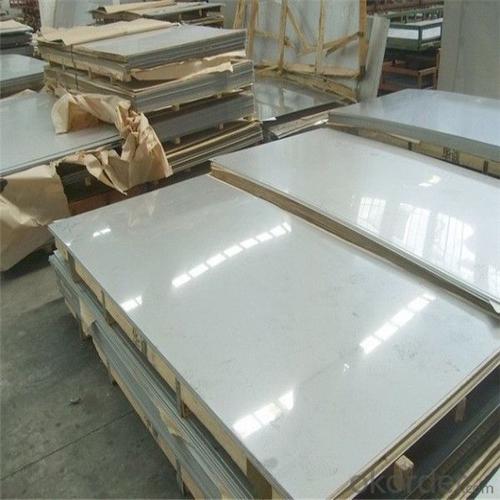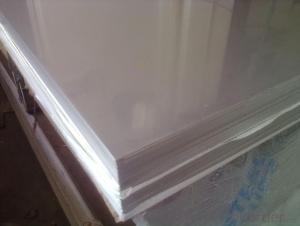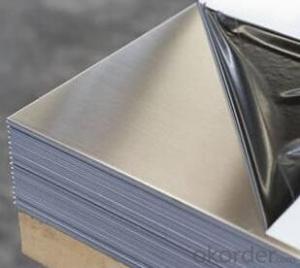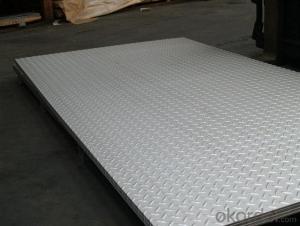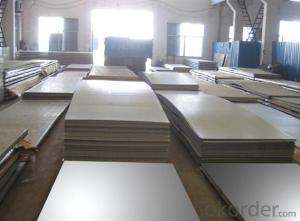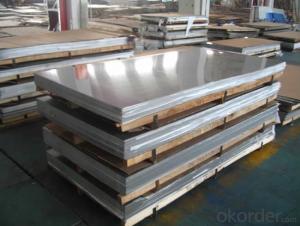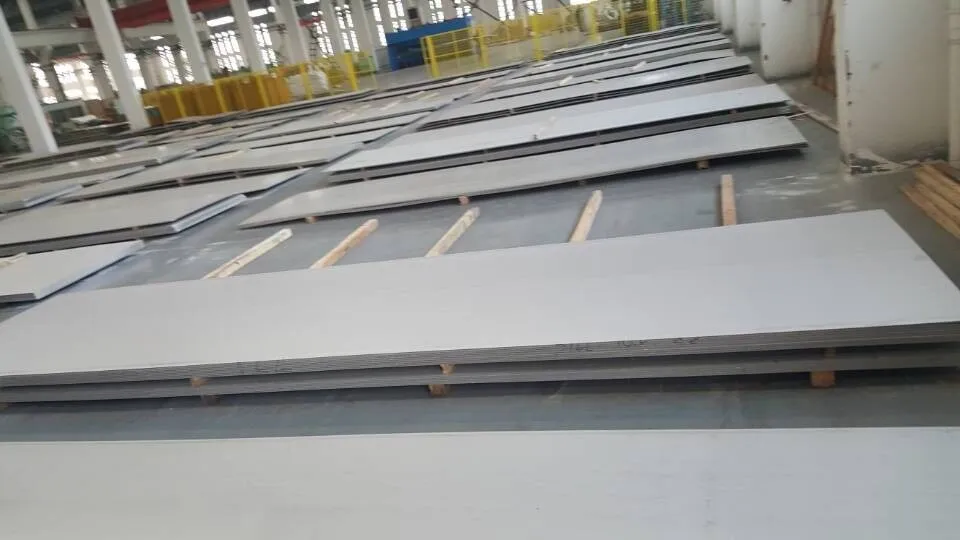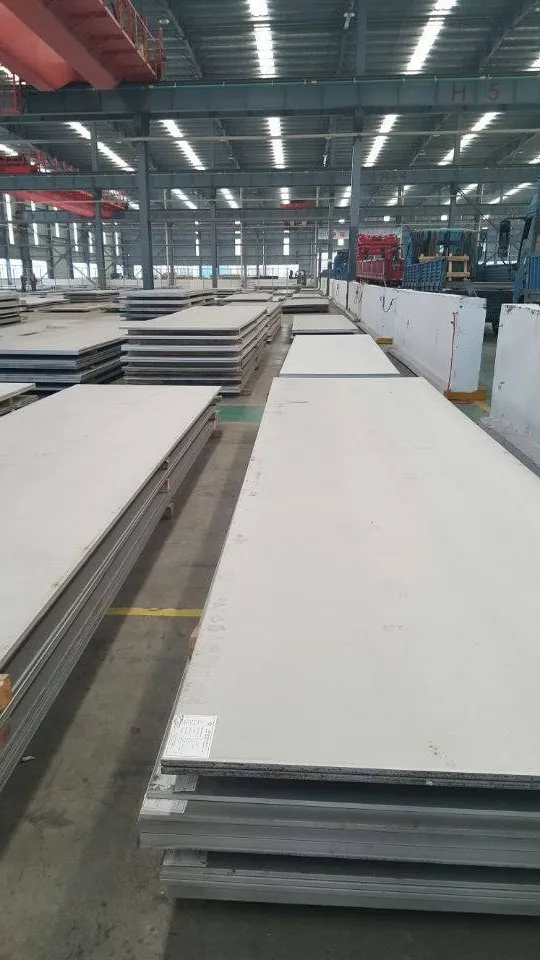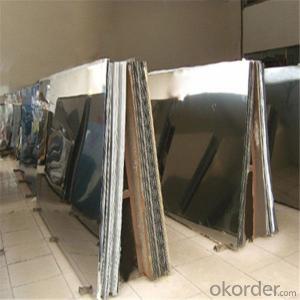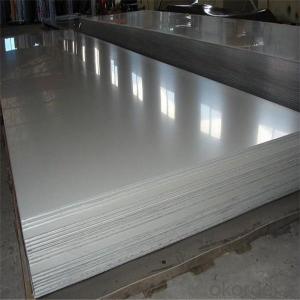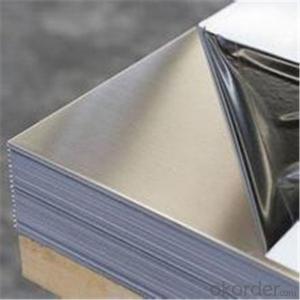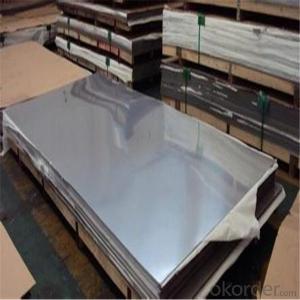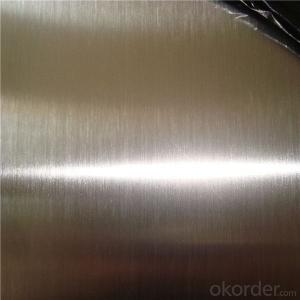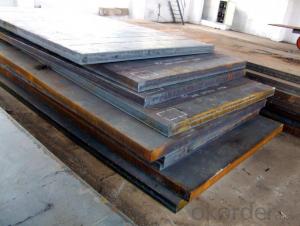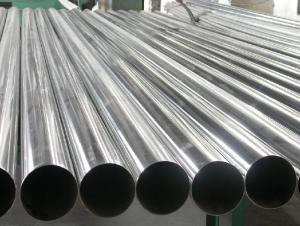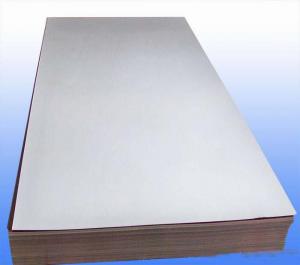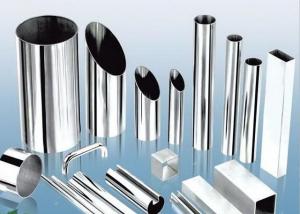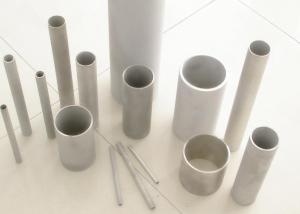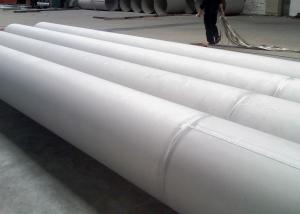Stainless Steel Plate 2205 2507 2520 duplex
- Loading Port:
- Shanghai
- Payment Terms:
- TT OR LC
- Min Order Qty:
- 4 m.t.
- Supply Capability:
- 20000 m.t./month
OKorder Service Pledge
OKorder Financial Service
You Might Also Like
Specification
2205 2507 2520 duplex stainless steel plate
We are a professional manufacturer of stainless steel sheet. According to ASTM, JIS and AISI,GB, standards, Jaway steel enhances effectiveness and of quality control from selecting the raw materials, cutting, slitting, shearing, surface treatment, packing, exporting of the existing products.
Product Description
Product Name | Mill test certificate 2205 2507 2520 duplex stainless steel plate |
Material | stainless steel |
Color | natural color or as require |
Standard | AISI ASTM JIS SUS and GB |
Grade | 201/304/304L/321/316/316L/309/309S/310S/904L/2205/2507/2520 |
Packing | Seaworthy wooden pallet or according to client's requirement |
Thickness tolerance | +/- 0.25% |
Delivery time | Within 7-15days after getting your deposit. |
Advantages | Strong corrosion and decorative effect |
Mill | TISCO, ZPSS, BAO STEEL, POSCO ,LZ ,etc. |
Products Show
These are the normal items, for the special requirements,we can also meet.
Surface finish | Characteristics and application |
NO.2B | The surface brightness and flatness of no2B is better than no2D. then through a special surface treatment to improve its mechanical properties,No2B could nearly satisfy comprehensive uses. |
NO.3 | Polished with abrasive belt of git#100-#200, have better brightness with discontinuous coarse stria, used as inner and external ornaments for building, electrical appliances and kitchen utensils etc. |
NO.4 | Polished with abrasive belt of grit #150-#180,have better brightness with discontinuous coarse stria,but thinner than No3, are used as bathtub buildings inner and external ornaments electrical appliances kitchen utensils and food processing equipment etc. |
HL | Polished with abrasive belt of grit #150-#320 on the NO.4 finish and has continuous streaks, mainly used as buildings ornaments elevators,door of building, frontal plate etc. |
BA | Cold rolled, bright annealed and skin-passed, the product have excellent brightness and good reflexivity like mirror,kitchen apparatus,ornament etc. |
8K | The product have excellent brightness and prefer reflexivity can to be the mirror. |
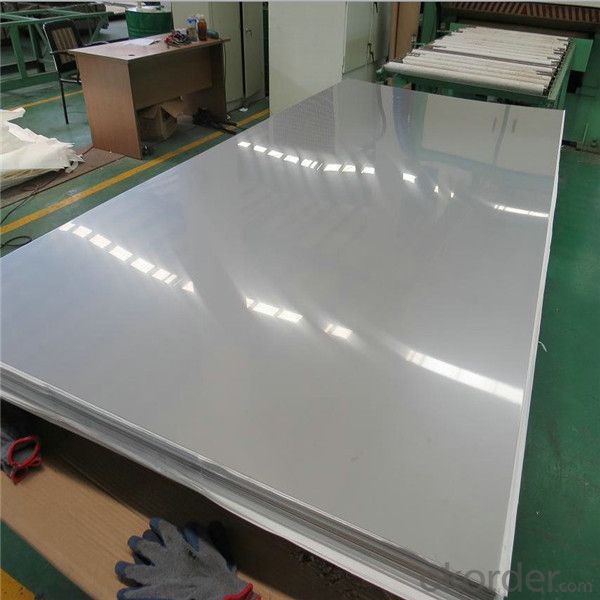
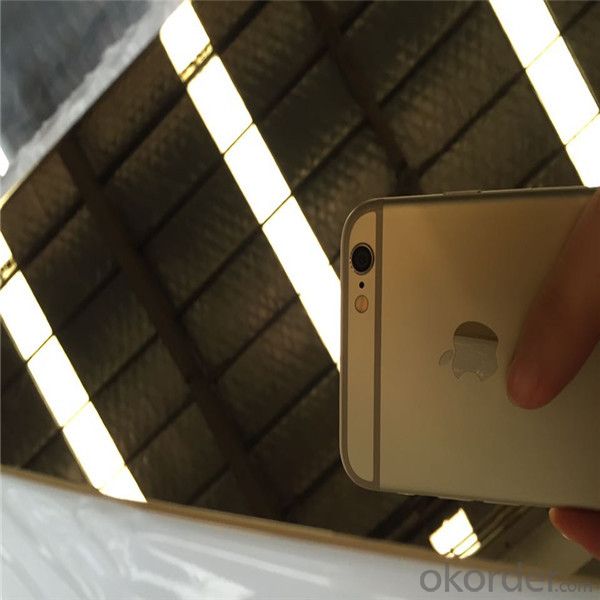
Our Advantages
• All products are made of high-quality imported raw materials.
• Our products are certified by ISO9001:2008 authentication quality systems.
• we are nominated as the AAA enterprise by Jiangsu government.
• Quick Response to Your Enquiry.
- Q: What are the different types of surface protection available for stainless steel sheets?
- There are several types of surface protection available for stainless steel sheets, each designed to provide varying levels of protection against corrosion, scratches, and other forms of damage. 1. Protective film: This is a commonly used surface protection method, where a thin, adhesive film is applied to the stainless steel sheet. The film acts as a barrier, protecting the surface from scratches, dirt, and other contaminants. It is typically removed after installation. 2. PVC coating: Polyvinyl chloride (PVC) coating is another popular option for surface protection. It is a thicker, more durable layer that provides excellent corrosion resistance. PVC coatings come in various colors and finishes, and can be applied to stainless steel sheets through a process called powder coating. 3. Paint coating: Similar to PVC coating, paint coating involves applying a layer of paint to the stainless steel surface. This can be done through spray painting or electrostatic coating methods. Paint coatings not only protect against corrosion but also offer aesthetic enhancements. 4. Passivation: Passivation is a chemical process that removes iron from the stainless steel surface, creating a protective oxide layer. This layer improves the corrosion resistance of the stainless steel sheet. Passivation is commonly used in industries where the stainless steel is exposed to aggressive environments. 5. Electropolishing: Electropolishing is a process that removes a thin layer of metal from the stainless steel surface, resulting in a smooth and clean finish. This process not only enhances the appearance of the stainless steel but also improves its resistance to corrosion. 6. Metal plating: Metal plating involves applying a thin layer of another metal, such as zinc or nickel, onto the stainless steel surface. This provides sacrificial protection, as the plated metal corrodes instead of the underlying stainless steel. Metal plating is commonly used in outdoor applications where the stainless steel is exposed to harsh environments. It is important to choose the appropriate type of surface protection based on the specific requirements of the stainless steel sheet. Factors such as the environment, intended use, and aesthetic preferences should be considered when selecting the most suitable surface protection method.
- Q: Can stainless steel sheets be used for outdoor railings?
- Yes, stainless steel sheets can be used for outdoor railings. Stainless steel is highly resistant to corrosion, making it an ideal material for outdoor applications. It can withstand exposure to various weather conditions, including rain, humidity, and sunlight, without rusting or deteriorating. Additionally, stainless steel's strength and durability ensure that it can withstand the pressure and weight typically exerted on railings, making it a reliable choice for outdoor installations.
- Q: What kind of welding rod is used for 310S stainless steel?
- What kind of welding rod is used for 310S stainless steel?:310S stainless steel should be welded with ER-310 wire or A132 and 137 electrodes.
- Q: What are the different types of stainless steel sheet thickness tolerances?
- The different types of stainless steel sheet thickness tolerances include standard, tight, and extra tight tolerances. Standard tolerances allow for slight variations in thickness, tight tolerances have lower permissible deviations, and extra tight tolerances have even smaller allowable variations in thickness.
- Q: Can stainless steel sheets be used for electromagnetic shielding?
- Indeed, electromagnetic shielding can indeed be achieved through the utilization of stainless steel sheets. The remarkable conductivity of stainless steel allows it to proficiently obstruct or weaken electromagnetic radiation. By employing stainless steel sheets as a protective barrier, the infiltration of electromagnetic fields can be effectively hindered, consequently safeguarding vulnerable electronic devices, machinery, or areas from any potential electromagnetic interference (EMI) or radio frequency interference (RFI). The utilization of stainless steel sheets is prevalent in scenarios necessitating electromagnetic shielding, such as the fabrication of enclosures or cabinets utilized in the realms of electronics, medical equipment, telecommunications, or military systems.
- Q: How do you prevent stress corrosion cracking in stainless steel sheets?
- To prevent stress corrosion cracking in stainless steel sheets, several measures can be implemented. 1. Material selection: It is crucial to choose the appropriate grade of stainless steel that is resistant to stress corrosion cracking. Commonly used grades such as 304 and 316 have good resistance, but specialized alloys like duplex stainless steels or high nickel alloys may be required for more aggressive environments. 2. Environmental control: Controlling the environment surrounding the stainless steel sheets can help prevent stress corrosion cracking. This includes avoiding exposure to corrosive agents such as chlorides, sulfides, and acids. Additionally, maintaining proper pH levels and temperature can also minimize the risk of stress corrosion cracking. 3. Proper fabrication and handling: Stainless steel sheets should be fabricated and handled with care to prevent the introduction of stress that can lead to cracking. This includes avoiding unnecessary bending, cold working, or overloading during fabrication. Proper storage and handling techniques should also be followed to prevent surface contamination or damage that may facilitate stress corrosion cracking. 4. Surface protection: Applying protective coatings or passivation treatments can help enhance the corrosion resistance of stainless steel sheets. These treatments create a passive oxide layer on the surface that acts as a barrier against corrosive agents, reducing the risk of stress corrosion cracking. 5. Stress relief heat treatment: Stress relief heat treatment can be performed on stainless steel sheets to remove residual stresses that may have been induced during fabrication. This process involves heating the sheets to a specific temperature and holding it for a certain period, followed by slow cooling. Stress relief heat treatment helps to minimize the risk of stress corrosion cracking by reducing the internal stress levels. 6. Regular inspection and maintenance: Regular inspection of stainless steel sheets is essential to identify any signs of stress corrosion cracking at an early stage. This allows for timely repairs or replacements to prevent further damage. Additionally, proper maintenance practices such as cleaning, removing deposits, and ensuring proper drainage can contribute to the prevention of stress corrosion cracking. By following these preventive measures, the risk of stress corrosion cracking in stainless steel sheets can be significantly reduced, ensuring the durability and integrity of the material in various applications.
- Q: Do stainless steel sheets require any special handling or storage?
- Special handling and storage are necessary for maintaining the quality and preventing damage of stainless steel sheets. Consider the following essential points: 1. Gloves must be worn while handling stainless steel sheets to prevent leaving fingerprints and oils on the surface, which can cause corrosion. Moreover, sharp tools should be avoided to prevent any surface scratching. 2. To avoid rust or corrosion during storage, stainless steel sheets should be thoroughly cleaned to remove dirt, debris, and moisture. Cleaning can be done using mild soap or a specialized stainless steel cleaner. 3. It is crucial to store stainless steel sheets in a clean, dry, and well-ventilated area. Direct sunlight, extreme temperatures, and moisture should be avoided as they can lead to corrosion. Ideally, the sheets should be stored in a covered area or wrapped in protective materials like plastic or cloth to prevent scratches and damage. 4. Sheets should be separated to prevent contact and potential scratching or damage. This can be achieved by using dividers or interleaf papers between the sheets. 5. When moving or transporting stainless steel sheets, it is advisable to use appropriate handling equipment such as forklifts or cranes. This ensures safe and secure movement without causing any dents or scratches. By adhering to these guidelines for handling and storage, stainless steel sheets can be effectively protected and maintained in optimal condition for their intended use.
- Q: How do I prevent corrosion under insulation on stainless steel sheets?
- In order to avoid corrosion under insulation on stainless steel sheets, there are several measures that can be taken: 1. Make careful choices when selecting insulation materials. Opt for materials that are compatible with stainless steel and have a low water absorption rate. Avoid using materials that can cause galvanic corrosion when they come into contact with stainless steel. 2. Ensure that the insulation thickness is adequate to prevent moisture condensation on the surface of the stainless steel. Moisture condensation can trap moisture and speed up the corrosion process. Seek advice from an insulation specialist to determine the appropriate thickness for your specific situation. 3. Install vapor barriers between the insulation and the stainless steel sheets. These barriers act as a moisture barrier and prevent water or moisture from entering, which can lead to corrosion. Vapor barriers can be made from materials like foil or plastic films. 4. Pay attention to proper installation techniques to avoid any gaps or areas where moisture can accumulate. Focus on the joints, seams, and connections, ensuring that they are tightly sealed to prevent water from penetrating. 5. Regularly inspect and maintain the insulation system to detect any signs of damage, such as leaks or deterioration. Promptly repair any damaged insulation or vapor barriers to prevent moisture from reaching the stainless steel surface. 6. Provide sufficient ventilation to prevent moisture buildup in enclosed spaces. Good airflow can help reduce the occurrence of condensation and subsequent corrosion. 7. Consider using cathodic protection methods, such as sacrificial anodes or impressed current systems, to protect stainless steel sheets from corrosion. These methods generate an electrical current that counteracts the corrosion process, extending the lifespan of the stainless steel. It is important to consult with corrosion specialists or insulation experts to ensure that the best practices are implemented for your specific application and environment.
- Q: Seeking stainless steel plate 304 material and 304j material what is the difference?
- 304 material and 304J1 contain nickel different, 304J1 contain 6 nickel, 304 contain 8 nickel
- Q: Can stainless steel sheets be used for solar panels?
- Solar panels can indeed utilize stainless steel sheets. This material possesses a strong and reliable nature that withstands corrosion, thus making it suitable for long-term and outdoor usage. It offers exceptional defense against environmental elements like moisture and UV radiation, which are commonly encountered in solar panel installations. Furthermore, stainless steel showcases commendable thermal conductivity, promoting efficient dissipation of heat from the solar cells. This characteristic aids in maximizing the energy conversion efficiency of the panels. Additionally, stainless steel sheets present a sleek and polished surface, enhancing the visual appeal of the solar panels. All in all, stainless steel sheets are a reasonable and widely chosen option for the production of solar panels due to their durability, resistance to corrosion, thermal conductivity, and aesthetic attractiveness.
Send your message to us
Stainless Steel Plate 2205 2507 2520 duplex
- Loading Port:
- Shanghai
- Payment Terms:
- TT OR LC
- Min Order Qty:
- 4 m.t.
- Supply Capability:
- 20000 m.t./month
OKorder Service Pledge
OKorder Financial Service
Similar products
Hot products
Hot Searches
Related keywords
